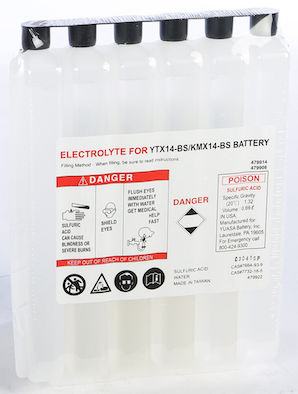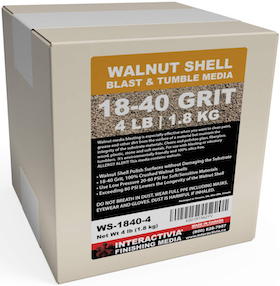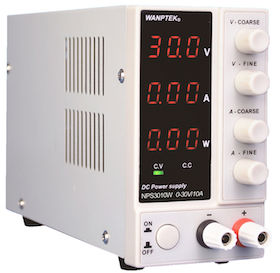
-----
Copper plating of lead bullets, cheap & simple
Plating usually requires good adhesion to be useful, and it is difficult to get good adhesion on lead because adhesion requires that the parts be clean and free of oxides, whereas conventionally used acids can't remove lead oxides. Fluoride-based acids like fluoboric are required.
But good is a relative term, and how good the adhesion needs to be depends upon the application.
Professional platers strive for, and sometimes obtain "Perfect adhesion" -- which means that the plating cannot be separated from the substrate even with sophisticated equipment; either the plating or the substrate will rip, rather than the interface. Perfect adhesion onto lead sounds unlikely, but test results for plating on lead aren't as widely available as test results from plating onto other materials.
A. My bullets turn out beautiful because I use a "leveler". I found a college paper which discussed using polyethylene glycol as a leveler. It sounded technical but turns out it was available at Walmart under the name Miralax. Yes it is a laxative! So...
Battery acid
⇦ on
eBay
or
Amazon [affil link]
(Sulfuric acid from a battery)
Zep Root Kill ⇦[this on
Amazon affil links]
for copper sulphate
Miralax ⇦ on
eBay or
Amazon [affil link] for the leveler.
Dissolve Zep in the acid until it won't take anymore.
Add two tbsp of Miralax.
Now you have a perfect bullet plating solution
- Mobile Alabama
June 30, 2022
Q. Hi James,
I am very much interested in your method.
Can you post a more detailed description, please?
Volume of sulfuric acid, i.e., 500cc
Weight of copper sulphate, i.e., 2 tablespoons
Temperature, i.e., room temperature
Voltage, i.e., 1.5V or 9V
time, i.e. 2 hours
Thanks
- Rothley, Leicestershire, UK
January 13, 2023
Multiple threads merged: please forgive chronology errors and repetition 🙂
Q. We have recently started copper plating lead cast bullets up to 100 µmeters in a cyanide copper bath. We are having a problem with the adhesion of the copper onto the lead. The process that we are using is as follows;
- hot soak at 60 °C in HP-10
- electro clean at 60 °C in HP-15
- rinse
- rinse
- pickle in A-720 (fluoride based acid)
- rinse
- rinse
- plate in cyanide copper at 60 °C
- rinse
- rinse
- passivate in MS-020 (chromic acid)
I would appreciate any comments or advice.
Martin Swartbullets - Zaire
1996
A. Just a wild guess to get things started, but have you checked to make sure you are not dragging hexavalent chromium up and down the line in cracked rack coatings, or improperly rinsed barrels, or routing chrome rinsewater into the preplate rinses?
I am assuming that your supplier set you up with the preplate cycle, it looks OK except for:
Are you using a copper strike? A hot, full strength copper cyanide may not give you perfect adhesion without a strike.
How are you testing adhesion? (Do you have to work very hard to see the adhesion problem)

Tom Pullizzi
Falls Township, Pennsylvania
A. It seems to me you are going from an acid almost directly into a cyanide solution. This will cause problems. We immersion clean, rinse, rinse, weak fluoboric acid rinse, rinse, rinse, weak sodium cyanide rinse, rinse then into the copper. We don't passivate. We don't strike in our barrel operation and I assume you are barrel plating.
David Guleserian- Rhode Island
![]() Great help, David. Thanks!
Great help, David. Thanks!
Regards,

Ted Mooney, P.E.
Striving to live Aloha
finishing.com - Pine Beach, New Jersey
Ted is available for instant help
or longer-term assistance.
Multiple threads merged: please forgive chronology errors and repetition 🙂
Copper Hardener
by N. Kanani
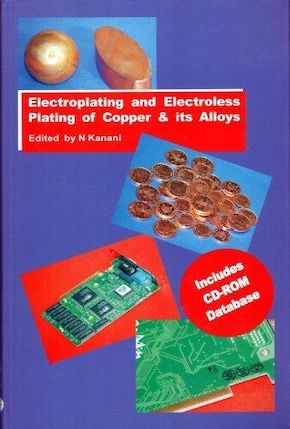
on eBay or Amazon
or AbeBooks
(affil link)
Q. We copper plate lead bullets to .006 thickness. I heard there's a copper hardener-gel like additive available on the market.
Please inform me as to where I could buy this additive or get info on how to make our present finish harder.
We use Acid Cu to build up & finish with same solution but with brightener.
Ener-Tech Inc.
1998
A. Contact a brightener vendor who does baths for rotogravure. They include a hardening agent. McGean-Rohco has a bath called 320 or 321 that uses a hardening agent. I'm sure there must be other vendors, too.

Bill Vins
microwave & cable assemblies - Mesa (what a place-a), Arizona
Multiple threads merged: please forgive chronology errors and repetition 🙂
Q. Can anyone offer any information about plating onto lead. Obviously, adhesion seems to be the biggest problem.

David Grimes
plating company - Farnham, Surrey, United Kingdom
1999
A. Hi David. I found a reference to ASTM B319, "Recommended Practice for Preparation of Lead and Lead Alloys for Electroplating".
Good luck!

Ted Mooney, P.E.
Striving to live Aloha
finishing.com - Pine Beach, New Jersey
Ted is available for instant help
or longer-term assistance.
A. A number of years ago, I was involved with a project for the copper plating of lead bullets. I don't remember all the details, but the use of a fluoboric acid dip (followed by appropriate rinsing) was very important in obtaining good adhesion of the copper. The copper was a cyanide based process.
Trust this helps Ken Lemke

Ken Lemke
Burlington, Ontario, Canada
A. Hi David ,
Ken Lemke is right, the use of 5% fluoboric acid as an acid dip prior to a Cyanide Copper plate is most important to achieve good adhesion on lead based products; you cannot use either Sulfuric or Hydrochloric acids because the lead salts of both are insoluble.
Best regards

John Tenison - Woods
- Victoria Australia
A. I have worked with lead and plated without cyanide copper plating and directly plated to bright acid copper, it works successfully, but should carefully and quick dip with current connected to hanger always, and acid dip with HNO3.
Makk Safna- Gresik, Indonesia
June 1, 2008
Plating pistol bullets
Q. I run a small company that makes hard cast hand gun bullets for hunting and I would like to learn how to apply a copper plating to them to get rid of the problem of leading the bore. I need a process that will apply the copper to hundred's of bullets at a time and will not beat them up or distort them in anyway. Also it must be put on in a way that the plating won't strip off in the riflings of the bore under the extreme pressures of the bullet passing at high velocity. I know it can be done as another company does it to their bullets.
Thanks,
- Andalusia, Illinois
2002
A. Match Grade 308's? I prefer 300 Mags on a windy day, and 25-06 on a hot calm day. I've shot those rounds and the Copper still comes off in the rifling. In order for the rifling to function it must gall the bullet surface, and in so doing some of the copper is transferred to the rifling lanes. You can analyze the cleaning patches for copper and find it there. Anyway I recommend barrel plating in a finer media such as BBs. If you are really concerned you can use a rotating kiln design. This would virtually eliminate any distortion of the surface, then screen separate them. Fluoborate process. I used to barrel plate Cadmium with a Chromate conversion coating onto 20mm rounds for the navy without media and they still shot as true as 20mm can shoot.
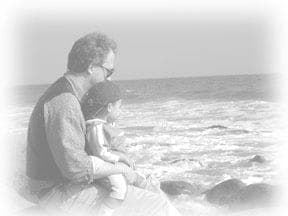
Dave Kinghorn
Chemical Engineer
SUNNYvale, California
A. John,
Many years ago I worked at an ammunition company. They manufactured ammo of most common cals. They used a tumbler barrel plating process in very hot potassium cyanide plating solution. I remember the two main hassles they had were with the antimony content of the lead, causing passivity during chemical cleaning. So be sure of that and work back. and the absolutely critical level of free cyanide in the copper strike bath. That's how they did it.
- NSW, Australia
A. Hi I am not a engineer but I have been experimenting with a small drum plating setup for my personal use on 45 acp and 45 70 with mixed results not having access to cyanide I have focused on an acid type plating bath (copper sulphate ⇦ on eBay or Amazon [affil link] / sulfuric acid). My plater handles around 400 rounds at a time and while not the best bullets I have seen it does turn out usable plated bullets. The drum plater itself works great but I am not happy with the rest of the process but I am still learning. Bonding to the lead is not what it should be, and the plating is somewhat brittle. May try annealing after plating. Also I am casting from wheel weights, and other elements in the lead may be affecting the copper-lead bond. Also need to work on the pre-plating preparation. My first batch I washed in sodium hydroxide solution and got very poor bonding; plain hot water worked much better -- may try phosphoric acid wash next. I will email you pics of the plater if you wish; it would be easy to scale up to a larger size if needed. Don't be afraid to experiment!
mark dula- stony point, North Carolina
February 11, 2009
Multiple threads merged: please forgive chronology errors and repetition 🙂
Hard plating of cast lead bullets
Q. Sirs:
I am a small cast lead bullet manufacturer looking for an edge and better sales. Copper clad bullets are not the best, pure copper over lay on bullets peels off at high velocity and leaves too much fouling in the barrel. Iron would be harder and with a carnuba wax final polish would be a distinctive dark color and do the job. Questions? Can lead bullets be barrel plated with iron? They come out of the caster clean with no oxide coating to be removed. What chemicals would be needed, what basic plating equipment would work? Process question- I use cement mixers in a Teflon polymer coating process now, can they be used with modifications to barrel plate? I have a complete machine shop and can make almost anything. Please return your thoughts and suggestions.
Thank you,
- Lincoln University, Pennsylvania, USA
2003
A. Most job shops do not know how to properly prepare lead for plating, therefore the plated deposit has poor adhesion and "peels" off easy.
The process should be: Alkaline clean off the "organic soil", rinse, dip in 10% Fluoboric Acid. rinse, strike in a Copper Fluoborate Plating Solution, Rinse, Copper Plate in a copper sulphate solution to thickness desired.
Proprietary Hardeners are available from companies listed on finishing.com that will work in the copper sulphate solution.
One of the problems you may be having with your current copper sulphate solution is that fact that lead removes the 50 ppm of Chloride that is necessary for the copper sulphate Solution to work. By first striking in a lead soluble solution you will cover the lead and then the sulphate solution only "sees" pure copper.

Robert H Probert
Robert H Probert Technical Services
Garner, North Carolina

Copper plating self-cast lead objects
Q. I'm trying to electroplate lead objects that I have cast myself but I can't seem to get it to plate at all. I have purchased battery acid
⇦ on
eBay
or
Amazon [affil link]
(watered down sulfuric acid) and some scrap copper pipes. I am running off a PC power supply 5v line putting about 1.5 Amps to it. I put the lead in the solution and the copper is attracted to it but it just forms large porous clumps of copper around the lead object. When I remove the copper clump the lead is as it was when first put in. Could someone please tell me what I am doing wrong.
Thanks,
- S. Dartmouth, Massachusetts, USA
2003
A. I think that acid copper plating on lead is not possible.You can use pyrophosphate copper bath (or cyanide but for home use first is better and not so toxic) or you can colour your works,for example:
Brown colour for lead:
20 gm copper sulphate
5 gm potassium permanganate
⇦ on
eBay or
Amazon [affil link]
1 lit water
Hot immersion(70-80 °C)!1-5 min.
- Cerovski vrh Croatia
Multiple threads merged: please forgive chronology errors and repetition 🙂
Q. Lead shot has been copper plated for many years. Now, lead bullets are copper plated. How do you plate copper onto lead?
Thank you.
hobbyist - Westford, Massachusetts
2003
A. Hi, Wayne. Some people believe that some lead objects of the correct shape can be successfully copper plated via a heavy plating that sort of shrink-wraps around them for adhesion. I know it can work in some limited cases because the ironwork of the William Penn city hall building in Philly was copper plated that way more than a century ago.
But the general case is that you need to pretreat lead in fluoride based acids like fluoboric. Please avoid hydrofluoric acid ⇦ why? (the single chemical which probably most frightens trained professional platers). Then plate with cyanide-based copper solution (cyanide is a terribly powerful instantaneous-acting poison). Don't even think about using cyanide or hydrofluoric acid in a hobbyist environment.
You might possibly slide by plating some things in some cases with theshrink-wrap approach, but in other cases you'd be wasting your time ... which raises the question of exactly what do you wish to copper plate and why? Thanks.

Ted Mooney, P.E.
Striving to live Aloha
finishing.com - Pine Beach, New Jersey
Ted is available for instant help
or longer-term assistance.
A. There is a mechanical process for plating copper on lead projectiles. This involves no cyanide and no electroplating. It is a variation of mechanical plating and uses a special technique to get a uniform, bright, adherent copper deposit.
Arnold Satow- New City, New York
2007
![]() Thanks Arnold.
Thanks Arnold.
Mechanical plating sounds like it could sometimes be the way to go.
Regards,

Ted Mooney, P.E.
Striving to live Aloha
finishing.com - Pine Beach, New Jersey
Ted is available for instant help
or longer-term assistance.
QUICKSTART:
Although copper pipe, old pennies, and wire are sometimes used for amateur copper plating, for anything resembling production or continuous plating you need phosphorized copper anodes and a controlled addition of chloride ion (see thread 471/24, "Passive anodes in the acid copper plating bath" for a discussion of that topic.
A vinegar
⇦in bulk on
eBay
or
Amazon [affil link] & salt plating solution is ideal for a grammar school science project (see our FAQ, Electroplating -- How it Works) due to low toxicity, but is much too limited to be very useful in the real world.
To get adhesion of plating onto lead requires nasty fluoride-bearing chemicals, and nothing in a plating shop is treated with as much fear & respect by professionals. Cyanide is a very powerful & dangerous material. Daryl warns below that fluoride-based acids and cyanide-bearing materials should only be used by professionals who've had haz-mat training in its safe handing.
Q. I am an avid shooter and would like to copper plate lead cast bullets cheap and simply. I have seen websites where you pickle the lead then use their solution for striking or plating, but you have to use their copper anodes. I would like to use scrap copper or even possibly pre 1983 pennies (95% copper), whatever source of copper I find cheapest. A big part of the hobby is shooting as cheap as possible as I enjoy having friends and family join me for a Saturday at the range. Also, I will admit it would be nice to have bullets as pretty as the big boys make them, not to mention being able to reload without lubing bullets. I do not have much knowledge in this area, only what I have read on the internet so please assume I know nothing and be detailed, including where to get supplies.
I would like to thank anyone who shares any knowledge with me, THANKS.
hobbyist - Macon, Georgia
2004
Q. I am looking for the same answer and found this with Google search engine. No answers yet. I have tried vinegar and salt solution, 1.5V D battery, heavy copper wire as the cathode and have managed to plate .0005" but cannot go beyond that point. Also tried battery acid ⇦ on eBay or Amazon [affil link] solution but cannot get it to plate anymore.
Doug Henry- San Jose, California
2004
A. I don't think you're going to be able to accomplish what you want. I used to plate lead bullets for an industrial munitions company. We used a fluoborate based acid followed by a heavy coating of cyanide copper. This is not a venture for the hobbyist.

Daryl Spindler, CEF
decorative nickel-chrome plating - Greenbrier, Tennessee
QUICKSTART:
"Electroform" isn't the exact word for this case. The word 'Electroforming' is used when the plating layer becomes the actual object, and the original mandrel upon upon which the plating was done is inconsequential and is often discarded (hollow earrings and other hollow gold jewelry, for example, are electroformed onto a wax mold/mandrel). Craig seems to be saying that his plating is sort of "shrink wrapped" onto the lead, rather than adhering the way adhesive tape would.
Q. From what I have read online I decided my best way to accomplish what I wanted was to electroform the copper onto the lead. In case I am saying this wrong, I am plating in an acid copper bath to a thickness of about .010 inches forming a jacket around the bullet. I am plating at 100 ma. I would like to get input as to how to buff the bullets so they are smooth or should I add some proprietary ingredient to bath or change amps I am plating at. Any help would greatly be appreciated and thanks to the ones who have already responded.
Craig McAdam [returning]hobbyist - Macon, Georgia
2004
A. Craig,
The only way I have been able to get near polished bullets is:
1, as soon as I remove them from the plating, I hand dry them.
2, then using Cracked walnut dump them in my tumbler ~1hr.
3, then using corn cob and Dillon bullet polish, tumble ~1hr.
The bullets may not be as high a shine as factory but they do look good.
You could use rice for the first tumble if you do not wish to buy the walnut. It is cheaper but will need a bit longer in the tumbler.
Good Luck
- melbourne, florida
May 7, 2012
Q. I am very interested in the process of copper plating cast bullets. The process of swaging jackets sounds too expensive, cumbersome and time consuming. Can anyone tell me how to find more detailed info on how to set it up, please. Thanks for any input.
A. Someone asked how to buff his plated bullets. I wonder if a swage die would help you. I have found links that led me to eBay where you can buy a die that will fit on a Rock Chucker that will swage the entire bullet.
fellow shooter - Enville, Tennessee
February 29, 2008
A. I've been researching this thing for a while, and decided that while it seems cool to do, it's a lot easier to use a copper gas-check and a good bullet lube. A lot of leading comes from hot loads burning against the base of the bullet. keep velocities around 1700 FPS or less, and use a good lube, like glycerol monostearate (I found this by accident. It's used as an antistatic treatment for fabrics. It is stable at very high temps, and acts like a hard wax. Melts at 140 °F.)
I digress. Your solution should be made with copper sulphate. It's called "blue-stone". It's used to kill off algae in small ponds, or it used to be. Saturate the copper sulphate into distilled water (mix until the bluestone won't dissolve any further).
In a jar I took clean plumbing pipe scrap and covered it with concentrated sulfuric acid, and allowed that to saturate also.
I made a little tray of 10 Ga. copper wire for 25 bullets in a square 5" on a side suspended like a trapeze. I used a small plastic tub about a one quart size for the solution.
I used 20 Oz. copper sheet as the donor electrode. According to my reading, you need at least one square inch of anode for each square inch of surface to plate, so I just went with 25 square inches formed in a square ring around the perimeter of the tub.
The solution is made by taking the saturated copper sulphate and adding the sulfuric acid solution in with a dropper 'til the pH reads (you need litmus paper for this) 2.0 or there about. Mix it in the tub.
Prep the bullets: I used straight muriatic acid
⇦ on
eBay or
Amazon [affil link] to clean the bullets. I put them on a plastic tray made like the plating tray and let them sit for 10 min. and then dunked them up and down, and let them sit some more, for about an hour, till they're all dulled out. Then dump the acid and fill with distilled water. Rinse the bullets and then let them sit in the distilled water until you're ready to plate.
Power supply: The big boys use expensive power supplies that can supply high current at low voltage. I started with one bullet and one alkaline battery. Not good. I finally made a rack to parallel 25 1.2 V NIMH rechargeable batteries. That's 50 amps at 1.2 volts, but the current drops off quickly. 1.2 V adds material and as the voltage nears 0.4 V the plating gets finer.
Place your prepared, dunked bullets on the plating rack, dunk into the solution and hook 'em up! Raise the rack up and down in the solution every 10 minutes or so and go watch TV. As the volt meter shows the batteries to be about flat (I used a cheapie DVM), pull a bullet and measure it. You should get 2-3 mils of plating. Remove, wash and buff. Had enough work yet?
Problems: I found that the bullets don't plate where they touch the rack. I may try a new rack with nibs sticking up so that I could drill a hole in the point and mount them upside down. I also found that the plating depth was greater where the bullets were closest to the anode, and I'm not sure if that was strictly because of proximity, or if I did not agitate the solution enough. The bullets are murder to squeeze through a sizing die. I wound up lubing them to get them through the die. Pure soft lead helps, but you throw away a lot of bad bullets because pure lead does not fill out the mold well. I saw no big improvement in accuracy at the end of the day. If I was going hunting I would use commercial jacketed bullets and work up the most accurate load, giving power a back seat within reason. That's all I got.
- Los Angeles, California
May 5, 2009
Readers are welcome to browse this site anonymously,
but its main purpose is worldwide camaraderie through sharing
-- so readers desiring that may not engage anonymous posters.
![]() Some great responses and very helpful I have been plating a few bullets and have had acceptable results with acid copper solution in all areas except adhesion which is poor; plating looks great but isn't bonded well. I use a homemade barrel plater made from 8" PVC and it will do about 500 at a time and eliminates the problem of unplated areas on the bullets, plus requires no action once started
Some great responses and very helpful I have been plating a few bullets and have had acceptable results with acid copper solution in all areas except adhesion which is poor; plating looks great but isn't bonded well. I use a homemade barrel plater made from 8" PVC and it will do about 500 at a time and eliminates the problem of unplated areas on the bullets, plus requires no action once started
Will try the muriatic acid prep described in a previous post.
- Stony Point, North Carolina
A. Rich Thompson
I use a simple setup as Richard P, above. I use Root Stop copper sulphate and distilled water. Same saturated solution with root stop and leave some of the undissolved crystal at the bottom to insure a saturated solution.
I take about 1/4 oz from my auto battery to get a pH of about 2, acidic enough to make the solution a good conductor. Just be very careful as the sulfuric acid will do damage and burn you.
Casting the bullets, I do a water drop from the mold and transfer them from the water into a coffee can with Colman fuel. This will prevent oxidation of the lead and can be stored for long periods without danger of acid.
Plating, I use TSP (Tri Sodium Phosphate) and warm water [saturated solution] in a can to clean the bullets of any oils. This is safer than using acid. We used this in the subs to clean most anything. But it is a bit harsh on your hands, so wear gloves.
Plating Bath: I keep the bath at ~110 °F and move the solution around using a miniature pump. I used a desktop fountain waterfall.
Using a simple 110VAC to 24VDC center tapped transformer [110V in 24V center tapped 2A out} and a full wave diode bridge, I control the current using a 50 Ohm wire wound ceramic resistor with a wiper terminal. If you set it at ~20 Ohms you will have ~1A with 24 VDC. I found the resistor at a locale electronics reclaim shop for ~$5. you might find the transformer and diode pact there as well.
I use a sheet of copper on the bottom and copper wires across the top of a cheep glass cooking dish that is about 2" high edge and plastic tube to move the solution around through the pump.
To hold the bullets, I use enameled copper wire [again from the reclaim store] The enamel on the wire is impervious to most any solvent I can find at the hardware store, including some acids. So by cutting the wire at an angle, I have a sharp point of bare copper wire to make electrical contact.
The wire looks like a "C" but at sharp angles. The angular cut section is point up and bends 90 degrees. the bottom runs the diameter of the largest bullet you intend to plate. Then bend it up 90 degrees to a height of about 2x that of the tallest bullet. Now bend it down at ~45 degrees until it lined up with the sharp edge, now bend it up inline with the sharp tip.
The top of the hanger, I scraped off the coating and form it into a loop as a hanger. This loop makes electrical contact with the copper wire.
You may want to add a little strength to the copper wire. Simple, just place one end in a vice and on a long run, using vice grips pull the wire until you feel it stretch a little. This will add more spring strength and give the formed "C" some spring action.
Now place the bullet with the bottom against the pointed section and the head at the sharp bend at the top. If the bullet does not hold fast, just pull the top at 90 degrees to the bullet a little and it should hold.
Drop it onto the copper wires, turn on the pump and power to the DC supply and it takes about 20-30 min to plate 0.002" - 0.003" at 1 A current.
If you want more info, let me know and I will answer your questions and even send you a photo to help explain the above.
By the way, I am an electrical engineer and shooter.
david
- Melbourne, Florida
May 7, 2012
Q. Dave Laing
I am interested to know how well your plating process reduced lead fouling of the barrel?
Thanks
- Saint Louis, Missouri, U.S.
November 7, 2013
Q. I could easily be wrong but it is my understanding that in electroplating the anode is the plate-er and the cathode is the plate-ee? So, how do the bullets rolling around in a plastic drum become part of the electrical circuit?
Mike Grider- Fresno, California
June 13, 2009
! The tumble plater sounds interesting, please describe its construction and RPM. Are there ribs inside to encourage the bullets to tumble rather than slide? How is the circuit completed? I am guessing that the inside of the pipe is lined with the cathode material and the center or axle is a copper bar to act as the donor anode? This may renew my interest in this endeavor, as I had become disinterested, due to the extraordinary amount of work and marginal results that I obtained after several tries at it. The whole thing may be a moot point if I can't find any primers or powder.
Richard P [returning]- Los Angeles, California
July 7, 2009
A. Hi, Mike; hi, Richard. We have an online article here on Barrel Plating which will show you the basics. Most commercial plating barrels use "danglers" -- heavy insulated cables that come down the hanger arms of the barrel, and through a center hole in the barrel, then have heavy stainless steel knobs attached to their ends, so they and the parts remain at the bottom of the barrel as it rotates.
And, yes, the cathode is the "plate-ee", so those cables are attached to the negative pole, the cathode :-)
Good luck!
Regards,

Ted Mooney, P.E.
Striving to live Aloha
finishing.com - Pine Beach, New Jersey
Ted is available for instant help
or longer-term assistance.
Q. I want to plate lead bullets with copper. What method should I use. Is cyanide still available and not a banned substance?
Stan Kaczor- Port Elizabeth, East Cape, South Africa
July 8, 2009
A. Hi, Stan. Cyanide is not banned in the USA, although it may be banned in South Africa. But the fact that this very powerful poison is available to trained workers in industry doesn't necessarily mean that a hobbyist can easily get it ... let alone properly use it.
It is hard and dangerous to plate on lead really properly: it requires fluoride-based acids to activate, and usually cyanide-based copper plating. As hobbyists have reported here, some of the processes they use offer little adhesion and they are relying on sort of a "shrink wrap" effect to hold the plating on.
The internet and libraries, are a sort of one-room schoolhouse where people can read about things they can't necessarily safely do, and we don't advocate hobbyists using chemicals designed for use by people in an industrial setting, trained in hazmat, wearing proper PPE, and with trained help available. The first safety rule for working with dangerous materials is "Never work alone!", and most hobbyists will be violating it.
Regards,

Ted Mooney, P.E.
Striving to live Aloha
finishing.com - Pine Beach, New Jersey
Ted is available for instant help
or longer-term assistance.
[editor appended this entry to this thread which already addresses it in lieu of spawning a duplicative thread]
Q. How do bullet companies plate their bullets? How do they get an even layer over the entire surface of a lead core?
- mount prospect, Illinois, USA
July 24, 2009
Ed. note: Your posting was added to a thread which answers it.
Q. Hi! I want to copper plate lead bullets with a thickness of 0.020" and the plate need to be extremely adhered to the lead for preventing jacket separation in travel through the bore giving the accuracy of a Jacketed projectile. My questions are: What type of machines should I use -- tumblers? How long I should run the process? I know that it's really difficult to stick copper onto lead by electroplating but some use hydrofluoric acid to help this. I'm not an expert but I really want to engage this ... what books do you recommend about this topic? what other methods do you recommend?
Thanks!
product designer and gunsmith - Argentina
March 15, 2012
Q. I am looking to set up to plate lead bullets. The bullets that I plan on plating are .9 Square inches. I am trying to find out how many amps and volts I would need to barrel plate them to a thickness of .005" if I were doing 1000 at a time? Also, I am wondering if I were to plate say 2000 at a time would that be as simple as doubling the amps or is it much more complicated than that?
Ryan Wooton- Medford Oregon USA
June 21, 2014
Wire feed welder as a plating power supply?
Q. What about using a Wire Feed Welder (110v.) as a plating power source--me (DUMMY?) maybe?. Or -- if only .223 or 5.56 bullets use fired .22 lr cartridge cases as bullet jackets in a Bullet swaging setup. Works great--double duty and cheap--but must buy Swaging dies, but will pay itself back in short period of time. 1000 rounds later, used up a couple weekends though, but "What the H____".
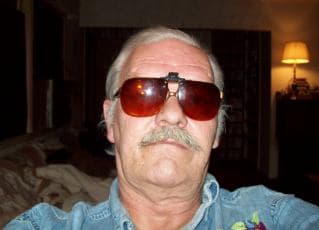
Martin Pierce
- Long Beach, California, USA , West Coast
August 27, 2014
A. Hi Martin. Proper power supplies became really cheap these days. It just doesn't make sense to try to make do with a wrong power source anymore.
Luck & Regards,

Ted Mooney, P.E. RET
Striving to live Aloha
finishing.com - Pine Beach, New Jersey
Ted is available for instant help
or longer-term assistance.
Thick copper plating for bullets (0.020 in)
Q. Dear all,
I would greatly appreciate the help of you folks in developing a copper bath to thick plate (0.020 in or 500 microns) lead parts, some are pure lead others are lead-antimony alloys.
The layer must have very high adhesion and good ductility, that is, hardness of about 100 to 130 HV.
So far, after properly washing the parts throughly and degreasing, surface activation with 10-15% fluoboric acid guaranteed good adhesion results.
My problem is achieving the desired ductility/hardness as mentioned early (100-130 Vickers). I am using traditional alkaline copper (cyanide) baths, as I believe the consistency on layer thickness, porosity, etc are better in alkaline than acid solutions.
In addition, to my very little knowledge, although cyanide baths usually have slower deposition velocities than acid baths, it yields softer and more homogeneous layers.
It's taking me about 12 hours to reach the 500 micron mark, but hardness is between 200 and 220 HV!
Would you please give me some details on how could I achieve this hardness with such thick layer? I need details on bath compositions, additives, temperature, etc.
In addition, any detailed literature is welcome.
Thanks for the help in advance. This will immensely help my project.
Marcelo
Researcher - Sao Paulo, Brazil
September 15, 2017
Copper plating solution questions
Q. Hi there.
I am embarking on a project with the goal of being able to copper-plate lead bullets at home. I have (mostly) built a barrel plating setup and I have read on here about the approximate amounts of copper sulphate, sulfuric and hydrochloric acids to add.
My first questions are about maintaining the chemicals in the tank. What happens to the sulfur content over time? It's been some time since I took high school chemistry and my chemical equations are lacking.
Best regards
- Brisbane, Queensland, Australia
June 2, 2020
A. Hi Daniel
First the simple answer. Nothing happens to the sulfur. You can look on the sulfuric acid as a carrier for the copper ions. copper sulphate baths can operate for years with very little attention and the copper is replenished from the copper anode.
However there are a couple of things to consider.
Lead always has an oxide film on the surface that must be removed to ensure adhesion. For this we usually use fluoboric acid that is not easily obtained by an amateur.
Secondly, lead sulphate is highly insoluble so plating from a sulfuric acid solution is not practical. Fluoborate copper processes are made but unlikely to be available to you and standard copper cyanide processes are not for home use.
Have you considered the problem of barrel plating heavy but relatively soft bullets. Even if you cast a hard alloy the sharp edges of the base are liable to damage and that will seriously affect accuracy.

Geoff Smith
Hampshire, England
Voltage, current and solution mixture for copper plating
Q. I'm planning to do copper plating on my lead bullet heads as a value added service and alternative to our current line of powder coated products. I've done my initial research and I was hoping someone could help me out on how I'm supposed to compute the mixture of copper sulphate and distilled water. Also, what would be my basis for the voltage and current that I will need. I've spoken to a local nickel plater here in country and he told me that he runs on 200amps over a period of 24 ours which is contrary to what I've read around the internet which runs low current and low voltage.
Nico Ariate- Quezon City, Philippines
November 4, 2020
A. Hi cousin Nico. We appended your inquiry to an existing thread on the subject to offer you some perspectives, cautions, and food for thought. As for how much current you will need, please see our Introduction to Faraday's Law to help you understand that the amount of plating that will occur is directly proportional to the current you apply and the length of time you apply it: essentially you must move 2 electrons through your rectifier and wiring for each atom of copper you want to move from the anode onto your cathode.
But you are not free to use really high amperages and short times because the copper ions can't move through the solution that fast. Probably somewhere around 20 amps per square foot of plating surface area is your limit. Voltage is just whatever is necessary to drive the desired amps -- probably somewhere between 4 and 10 volts depending on the geometry.
Luck & Regards,

Ted Mooney, P.E. RET
Striving to live Aloha
finishing.com - Pine Beach, New Jersey
Ted is available for instant help
or longer-term assistance.
A. Lead sulphate is insoluble. Therefore if you try to plate lead bullets in a copper sulphate bath you will achieve only unacceptable adhesion.

Tom Rochester
CTO - Jackson, Michigan, USA
Plating Systems & Technologies, Inc.

A. Hi Tom. Thanks for your response which is certainly correct from a conventional standpoint.
But some hobbyist platers seem to be claiming that they successfully plate on bullets from copper sulphate, and I tend to believe the claims because I was involved in the replating of the ironwork on Philadelphia city hall's William Penn Tower, where the original very heavy copper plating (generally about half the thickness of a penny) had been applied to iron & steel from a copper sulfate bath.
Much of the underlying iron & steel was badly corroded because once the plating was perforated, galvanic corrosion occurred -- but it apparently lasted many decades before trouble set in. The copper on the tower ironwork stayed in place, even after some of the iron was badly deteriorated, by sort of a shrink-wrap effect rather than by adhesion to the substrate :-)
Luck & Regards,

Ted Mooney, P.E. RET
Striving to live Aloha
finishing.com - Pine Beach, New Jersey
Ted is available for instant help
or longer-term assistance.
Q, A, or Comment on THIS thread -or- Start a NEW Thread
